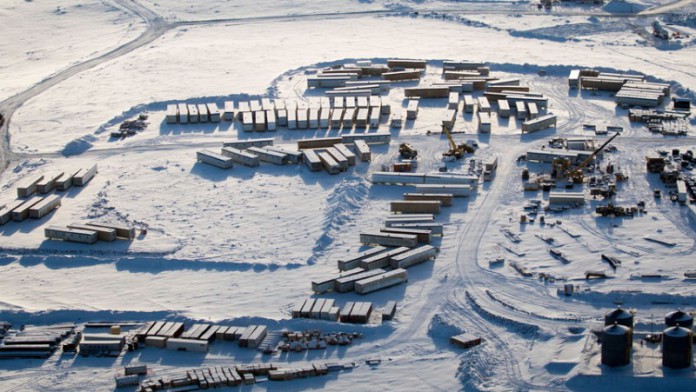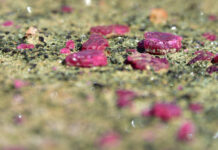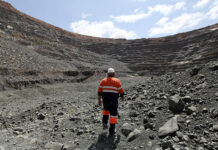
ABOUT 280km north-east of Yellowknife, the largest town of Canada’s North West Territories (NWT), is Gahcho Kué – a Chipewyan name for ‘the big rabbit’ – although caribou are also native to the region. So are diamonds.
It’s here, above the treeline and only 400km south of the Arctic Circle, that De Beers in joint venture with Mountain Province Mining, sank C$1bn (R9.5bn) building Canada’s latest diamond mine, and its first in eight years.
It’s a hostile environment and underpins the difficulty of finding fresh sources of diamonds. The often quoted data still has the power to amaze: of some 7,000 kimberlite pipes that have been sampled through time, only 60 have contained enough diamonds to justify a mine – about 1% of the total.
For Gahcho Kué, production of about 54 million carats is forecast over its 12-year life from now until 2028. But there are hopes for an extension project: “There’s some work that may come to fruition to see if we can get beyond the current 12 years,” says Tom Ormsby, head of external and corporate affairs for De Beers Canada in an interview with Miningmx.
Production began in August, but March represented the first in which commercial output was registered. Operations are round the clock unless a snow storm is fierce enough to obscure any of three open-cut pits where the partners operate.
Conditions are difficult. “It’s really the edge of the Arctic Circle,” says Ormsby. “The temperature can fall to minus 40 degrees in the deepest part of winter and there is water everywhere in summer. Underfoot the earth is tundra and peatland if you can call it that,” he adds.
Working on the mine is conducted on a two weeks on-two weeks off basis. Employees don’t board the outward-bound plane (which lands on an ice runway during winter; gravel in summer) unless they are appropriately suited up for the weather.
The amount of time employees are allowed outside is restricted but the mine itself never comes to a halt. “We’ve been mining in this region of Canada for more than 10 years so we’ve learned over time how to operate: the quality of holes and the machinery needed for it,” he said.
And the benefits are high. Gahcho Kué was estimated to contribute C$440M to the NWT economy in 2015 and a further C$5.3bn in gross added value now that it has reached commercial production, according to a socio-economic impact report by EY, the auditing firm.
The investment also comes at a time when De Beers closed the unprofitable Snap Lake – which has 12 years of ore that is still viable at a certain diamond price – while its other NWT mine, Victor, is nearly mined out, although it will be able to process surface material for a time. Hopes it too could be extended have not yet been realised.
As for Gahcho Kué’s economic prospects, it’s worth noting that the diamond market is in transition. In the longer term, the outlook is positive given the scarcity of new diamond discoveries and growing consumption metrics in places such as China.
Shorter term, however, there is some market pressure. De Beers’s third sales cycle amounted to $580m, somewhat better than the $545m in the previous cycle but which was 25% lower than in January which reflected a large restock. “We saw the continuation of good rough diamond demand in cycle 3 across the product range,” said Bruce Cleaver, CEO of De Beers. “This reflected positive sentiment from our customers following the Hong Kong International Jewellery Show in March,” he said.
Analysts are not convinced of the short-term outlook for the diamond market, however.
Said Macquarie in a recent note: “We remain fairly cautious on the near-term outlook for diamonds given the impact of slower December US jewellery sales on pipeline replenishment, the negative impact on rough demand from Indian demonetisation and further rough supply additions this year”.










